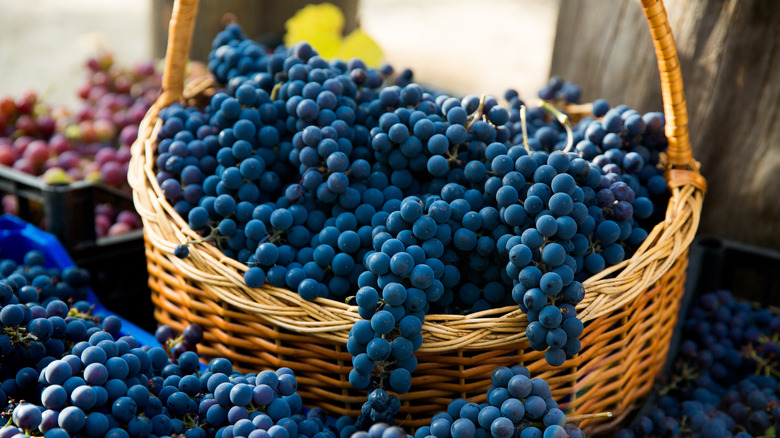The Reason Pinot Noir Is More Expensive Than Most Wines
Whether you're a wine novice or a full-blown connesouir, Pinot Noir — also known as Pinot Nero, Spätburgunder, and Blauburgunder — is a wine that offers something for everyone. With a low tannin content, a medium body, and an earthy, fruit-forward, lightly-spiced flavor profile, even those who are new to the world of red wine are likely to enjoy this approachable, easy-to-drink variety. For more experienced wine lovers, it's the unparalleled depth of flavor and complexity of this wine that keeps them coming back for more. However, one thing that might keep some drinkers away from a good Pinot Noir is the price.
The fact that it appeals to so many wine drinkers is one of the reasons Pinot Noir is possibly the most prized grape variety in the world. Unfortunately, it's also incredibly difficult to grow, and in addition to requiring a high level of maintenance, the vines are very vulnerable to disease. Despite being one of the most widely-grown red grape varietals in the world, the inherent challenges of producing a good harvest tend to drive up costs of the finished wine. All these complications are why growers commonly refer to Pinot Noir as "the heartbreak grape."
The cost of producing Pinot Noir grapes
Pinot Noir is an ancient grape varietal with roots that date back to the Roman empire. It predates popular but younger varietals like Cabernet Sauvignon by over 1,000 years. It's grown around the world in areas with intermediate climates that remain relatively cool throughout the growing season, but Pinot Noir is most strongly associated with Burgundy, France, where it's been cultivated since the 14th century.
The main weakness of Pinot Noir grapes is their thin skins, which makes them sensitive to temperature fluctuations, vulnerable to sun damage, and susceptible to disease. Because the grapes don't grow well in warm, sunny climates, they take longer to ripen on the vine, leaving more time for disaster to strike. Diseases like powdery mildew, as well as pests like nematodes or mites, can wreak havoc on a harvest. Growing these delicate grapes is not for the faint of heart, requiring great skill, consistent growing conditions, and extra labor and equipment.
When you buy a bottle of Pinot Noir wine, you also pay for the terroir, or environmental factors that make the wine unique. A Pinot Noir produced by a vineyard or winemaker in Burgundy, where the grape has been cultivated for centuries, will likely cost you more than one produced anywhere else — especially if the grapes are grown by the same winery producing the wine, in contrast to grapes sourced from elsewhere. Bottles from less established Pinot Noir winemakers are generally less costly.
More affordable alternatives
Looking to enjoy a wine that delivers a similar flavor and body to Pinot Noir, without exceeding your wine budget while shopping? There are several great options to consider. Gamay, which hails from France's Beaujolais region to the south of Burgundy, is a natural comparison to draw. Not only are the two wines from similar regions, but they both boast high-acid, low-tannin, and fruity profiles, though Gamay is generally considered juicer than Pinot Noir.
If you're open to traveling farther from the main source of Pinot Noir, try Frappato from Sicily or Garnacha from western Spain or the "New World" (meaning countries outside of Europe). Easy to drink and delivering a similar body to Pinot Noir, these wines are simultaneously earthy and fruit-driven, with notes of cherry, pomegranate, and white pepper. Whichever wine variety you choose, remember that it's best to chill red wines before you enjoy them — not only will they be more refreshing on a warm night, but they'll also deliver more pronounced fruit flavors.



